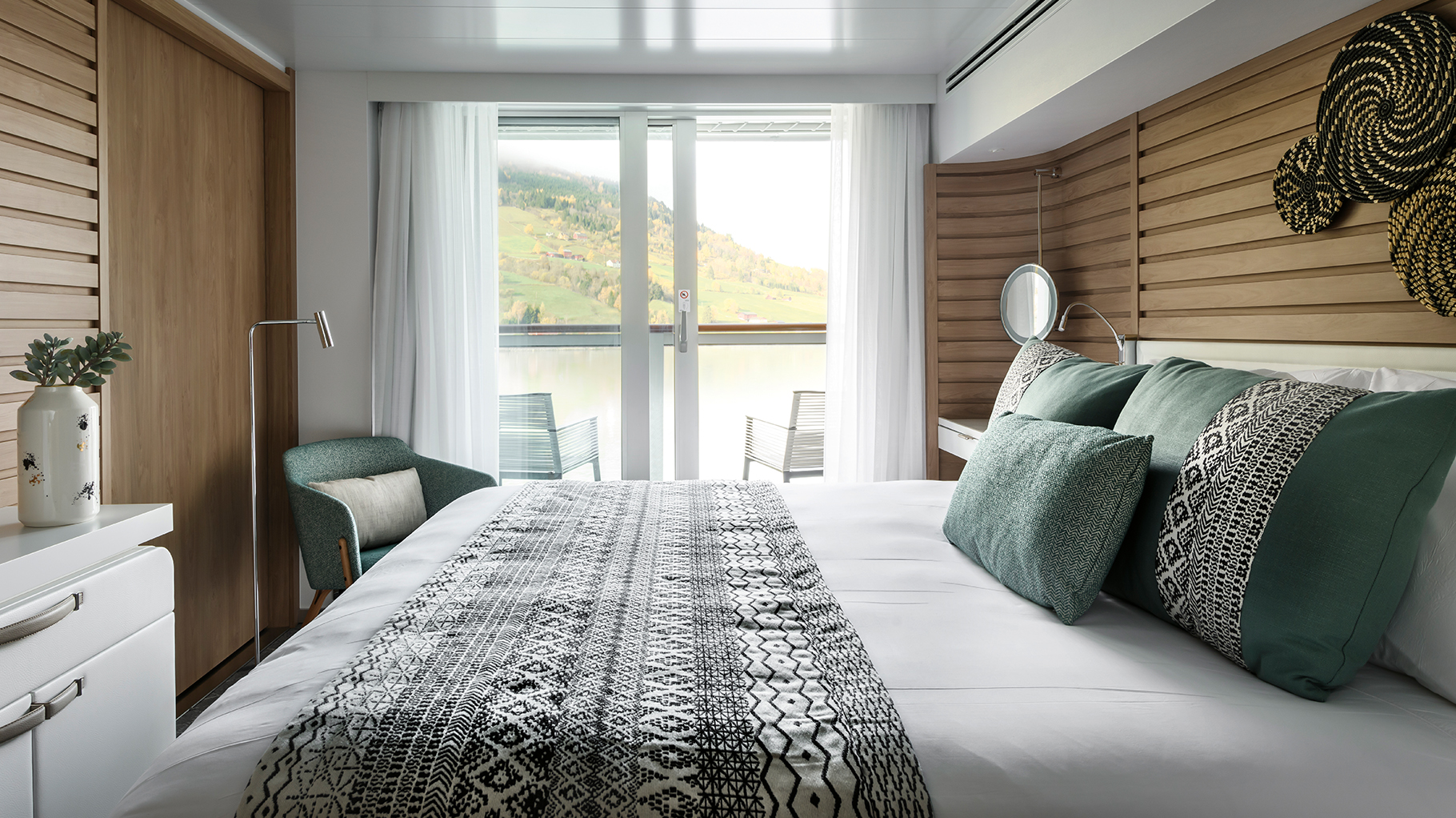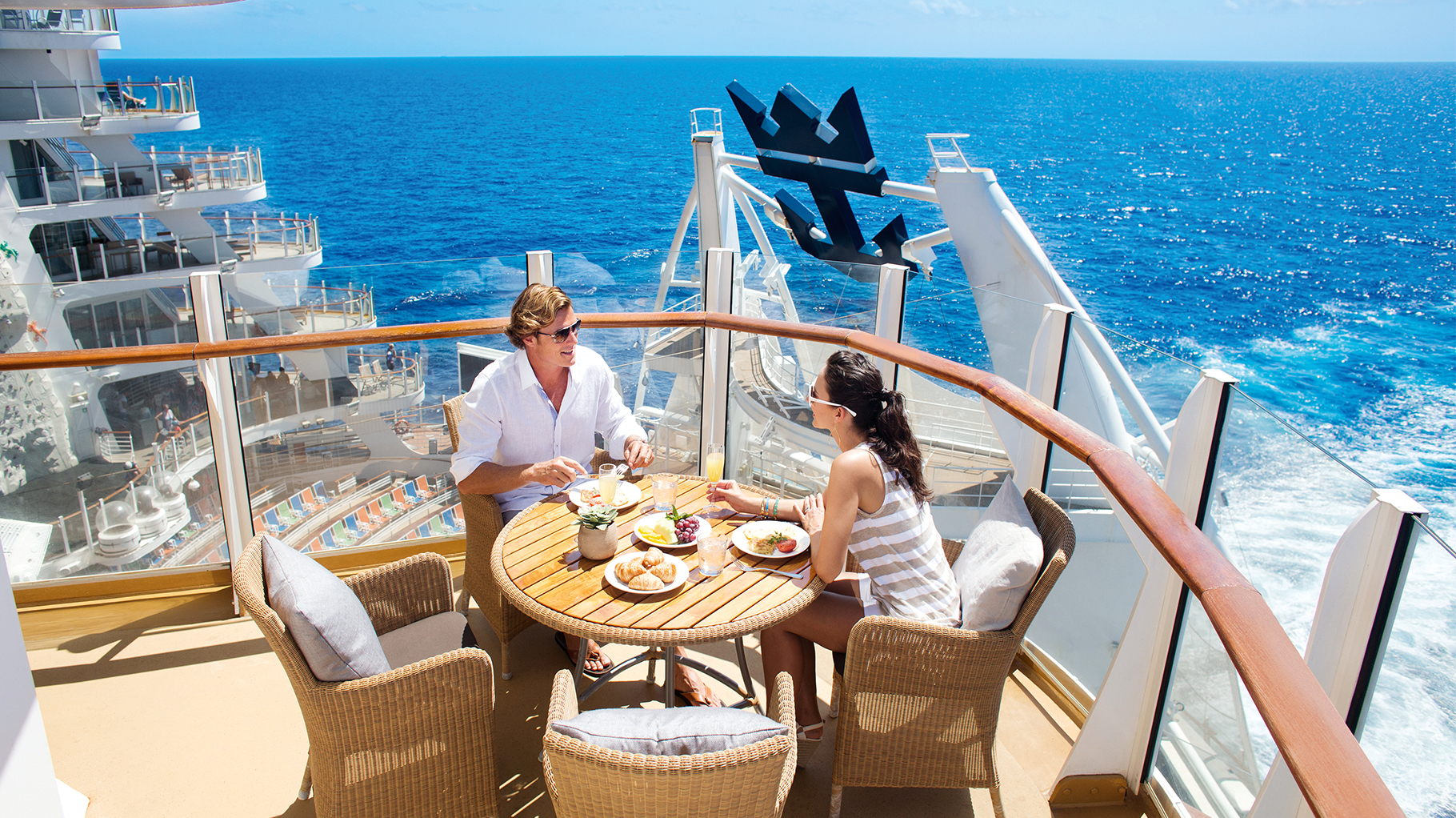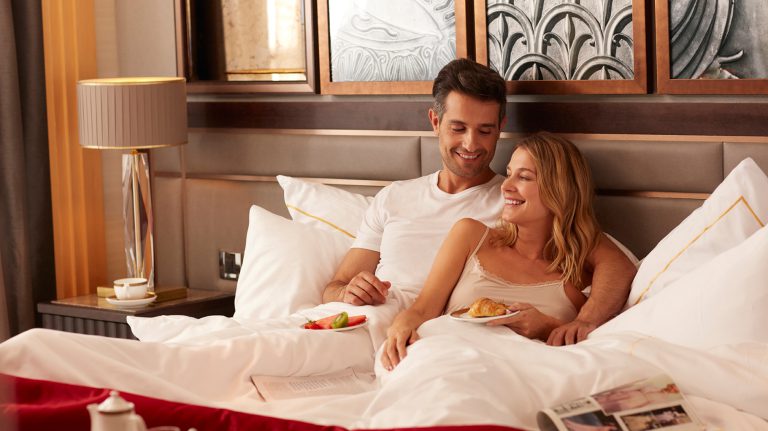From luxury spa suites to family rooms – and even cabins without a view – there’s a room on board that will suit you.
A crucial step in finalising a cruise booking is choosing your accommodation. Just like hotels, which have different styles and sizes of rooms, ships have different categories of cabins. Aside from the choices of big or small, balcony or no balcony, there are more specific considerations such as the options of butler service, complimentary minibar, exclusive lounge access, and even the style of windows – or no windows at all!
The most common cabin categories are: inside, outside, balcony, suite, family and accessible (for people with mobility issues). At first glance, this may seem overwhelming, but the decision does not need to be difficult. Generally, all cabins have a bed that can be separated into two single beds, a wardrobe, drawers, a desk, a television, a telephone, a safe and an ensuite bathroom with basic toiletries provided (soap, shampoo, conditioner, hairdryer and towels).

An “inside cabin” is a windowless room, positioned in an inner area of the ship, which is aimed at travellers on a tight budget. Sleeping in a pitch-black room might benefit light sleepers, but waking up in complete darkness can be disorienting. The lack of natural daylight and fresh air is not recommended for a week-long holiday, and the lack of an ocean view defeats the purpose of cruising.
All other types of cabins have windows. An “outside cabin” is located on the outer edge of the ship, in a better vantage point on the upper decks. The window can range from a small, unopenable porthole to almost floor-to-ceiling. Again, it’s advisable to skip the cheaper porthole cabins, which are found on the lowest passenger-accessible deck of the ship, near the waterline. Most luxury ships do not have inside or porthole cabins, but some older yachts may offer them.
A “balcony cabin” (sometimes called a “verandah cabin”) is the preferred accommodation, allowing guests to sit outdoors in a private space, enjoying the sea breeze and panoramic views. One of the great joys of cruising is to wake up, throw on a bathrobe and step outside to admire the sunrise on the horizon or watch the exciting arrival into a new port. During the day, you can use it to have an alfresco breakfast or lunch, unwind with a book or sunbathe in privacy. In the evening, a balcony is the perfect place to catch the sunset at sea.

Balcony cabins may be further defined as superior, deluxe or premium. This grading system refers to the size of the balcony, indoor spaciousness and features such as a walk-in wardrobe or sitting area with a sofa and coffee table. There may be a pull-out sofa bed for a third passenger, which is useful for children or friends travelling together.
Larger, more luxurious cabins are called “suites”. A suite will often have two distinct areas: the bedroom and a separate living area with a sofa, table and possibly a second television. Suite passengers also receive extra inclusions, such as evening canapes, free laundry, butler service or access to exclusive lounges and restaurants.
Suites are also distinguished by their level of extravagance, with the top-of-the-range often called penthouse suites or owner’s suites. These apartment-style accommodations can have three or four bedrooms, two bathrooms, a dining room, a lounge room, a study, a bar, a grand piano or a hot tub on a private terrace. Spa suites have a Jacuzzi bath, fancier toiletries, plusher bathrobes and easy access to the ship’s day spa.

A suite is ideal for couples who appreciate the finer things in life, but it can also suit families. While a family can book separate cabins for children and other relatives, some families may prefer to stay in the same space. Some ships have dedicated “family cabins”, with more space but fewer luxuries, and “interconnecting cabins” with a door in between two cabins, so parents can keep an eye on the kids. Interconnecting, family cabins and suites are also popular with groups of friends who don’t want to share a room.
The vast majority of cabins are “twin share”, designed to be shared by two people. The price is per person, so if the cabin is $1,000 per person, twin-share, it will cost $2,000 to book. A single person having the whole cabin to themselves will also pay the full $2,000 – just as a hotel room is not half-price if you are alone. Solo travellers can take advantage of “no single supplement” or “low single supplement” sale fares to pay a lower price. Family-friendly ships have some triple-share cabins for three people and quad-share cabins for four people, which can also offer a more affordable cost per person.
A general tip is to choose the highest category of accommodation you can afford for the ultimate comfort. However, if you have other priorities, save some spending money for cocktails, spa treatments, shopping or tours on land; after all, you might only use your cabin to sleep, shower and change clothes for the next fun day at sea!




